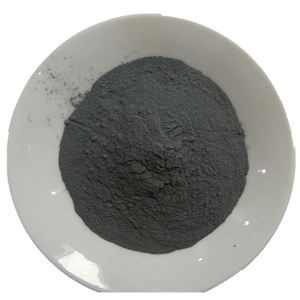Thermal spraying could be a technology that improves or restores the surface of a solid material. The methods are often accustomed to applying coatings to a good variety of materials and parts, to supply resistance to Wear, erosion, cavitation, corrosion, abrasion, or heat. Thermal spraying is additionally accustomed given electrical conduction of insulation, lubricity, high or low friction, killing wear, chemical resistance and plenty of alternative fascinating surface properties.
Thermal Spraying Powder is widely adopted across several industries as a most well-liked technique. it’s immense scope to increase the lifetime of new parts or through the utilization of tried and tested techniques, to repair and re-engineer worn or broken parts.

Thermal Spray Processes
All strategies of thermal spraying involve the projection of tiny softened particles onto a cleansed and ready surface wherever they adhere to create an eternal coating. Combined thermal and K.E. causes the particles to flatten or ’splat’ onto the surface, and onto one another, to supply a cohesive coating of sequential layers.
Numerous variations of the technique exist, including:
- Flame spraying
- Wire arc spraying
- Plasma spraying
- Detonation spraying
- High-speed oxy-fuel coating spraying (HVOF)
- High-speed air fuel (HVAF)
- Warm spraying
- Cold spraying
All thermal spray processes are often accustomed to applying ‘engineering coatings’ to switch the surface properties of Associate in Nursing items. Engineering coatings will give such properties as increased wear resistance, thermal barriers, electrical/thermal conduction, hard-chrome replacement and insulation across a good variety of applications.
Metallisation Flamespray and Arc Spray instrumentation are additionally accustomed to applying ‘corrosion protection’ coatings of metallic element, metal and metallic element/metal alloys onto steelwork like bridges, gantries, ships, off-shore platforms, gates/fences and vehicles. usually used as another to be exciting.
Thermal Spray Powders
There are a variety of thermal spray powders on the market, additionally as numerous processes of the application. Let’s take a glance at the variety of various thermal spray powders.
Corrosion Protection Thermal Spray
When it involves metalized coatings, their area unit 2 basic classes. These comprise engineering coatings and finishing coatings. Engineering coatings will ask for barrier coatings or wear-resistant coatings. Finishing coatings will ask for ornamental or anti-corrosion coatings. As an Associate in Nursing example, engineering and anti-corrosion markets that utilize metal spraying will embody construction, organic compound, marine, and oil and gas industries and additional.
Metal Powders
Various industries can use completely different types of coating materials. Here area unit variety of most typically used fine metals:
- Zinc powder
- Tin powder
- Black and red metal chemical compound
- Nickel powder
- Manganese powder
- Iron powder
- Granular copper
- Cadmium chemical compound powder
- Bismuth powder
- Aluminum powder
The thermal spray coating method, tho’ usually related to the spraying of metal powders, will involve the appliance of metalloid materials. Plastics, ceramics, alloys, and composites may also be thermally sprayed onto a surface. Increased particle velocities typically equate to redoubled coating quality. variety of measurement area unit accustomed assess coating quality. These will embody surface roughness, bond strength, small and macro hardness, chemical compound contents, and consistency.
Industries That Use Thermal Spray Coatings
The business through that product was developed most likely to use thermal spray coatings in a method, shape, or form. Here area unit a number of the industries that utilize thermal spray:
- Wire drawing
- Wind energy
- Valves
- Textile producing
- Solar energy
- Rubber producing
- Pump repair
- Pulp and paper
- Printing machinery
- Power and energy
- Pharmaceutical and medical process
- Petrochemical
- Molds and dies
- Mining
- Metal production and process
- Material handling
- Marine
- Industrial machinery
- Food and food process
- Fluid handling
- Electronics and semiconductor
- Defense and military
- Converting
- Compressor
- Chemical
- Bottling and canning
- Biomedical
- Automotive
- Agricultural
- Aerospace and rotorcraft
